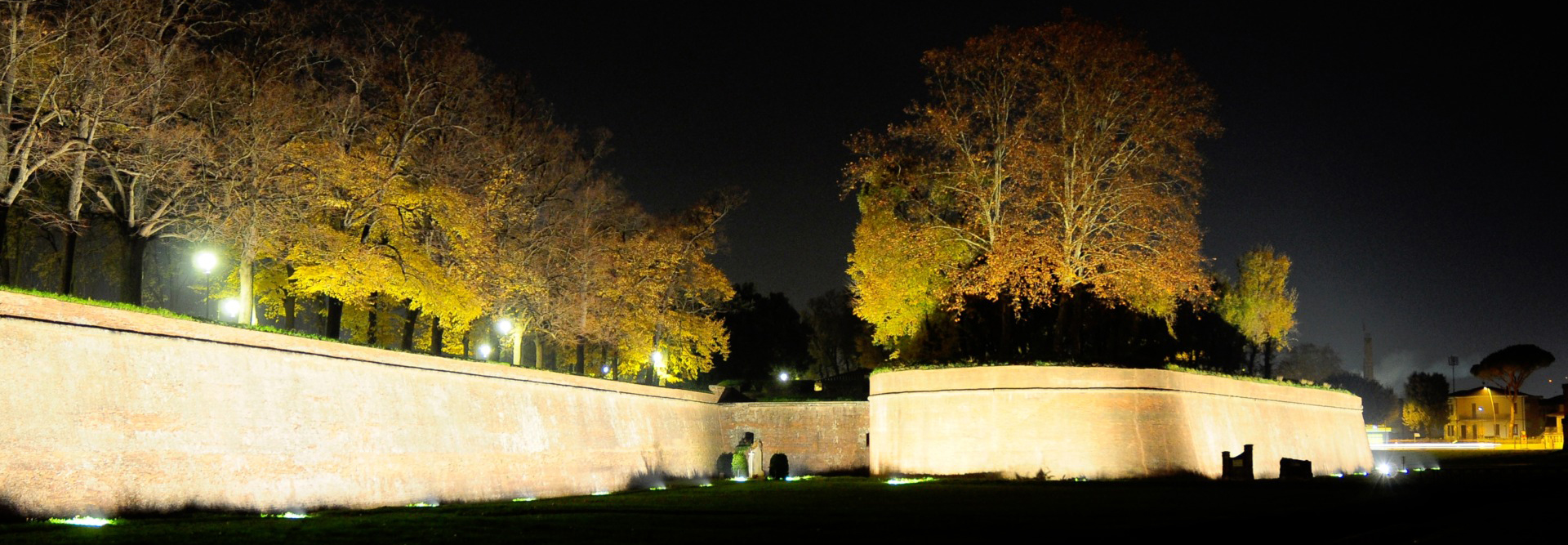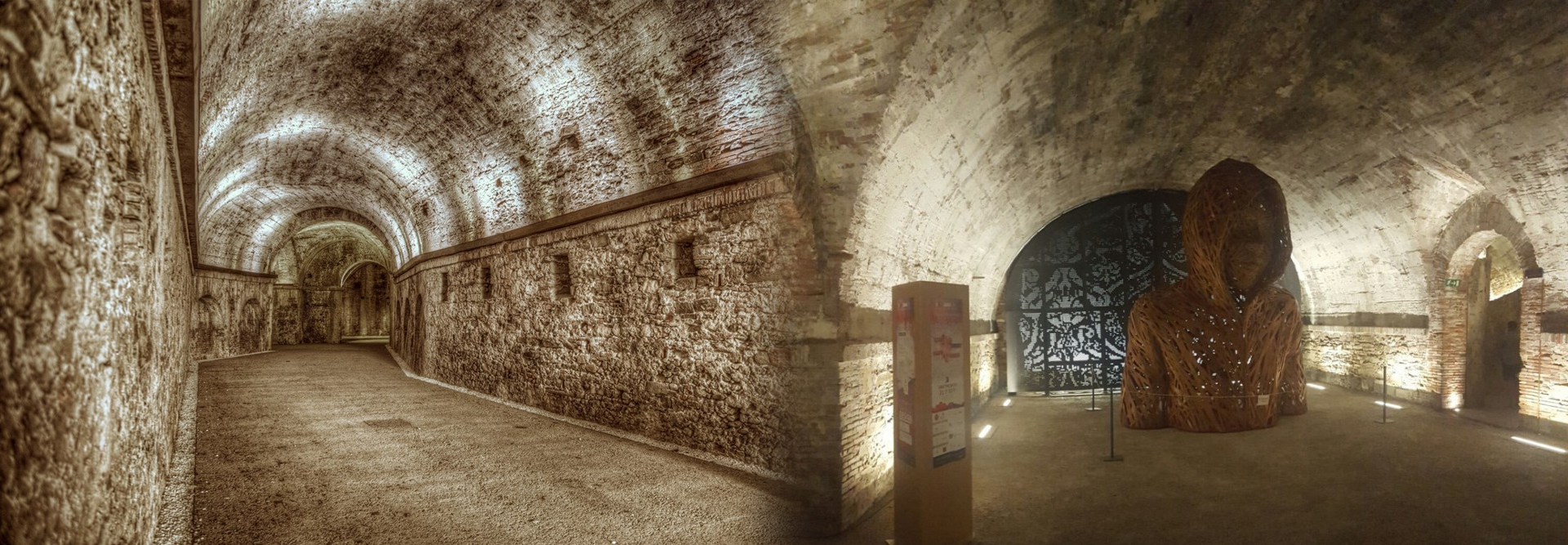Famous for its intact Reinassance-era city walls, Lucca is located in the heart of Tuscany, on the Serchio river, in a fertile plain near the Tyrrhenian Sea.
History
Ancient and medieval city
Lucca was founded by the Etruscans (there are traces of an earlier Ligurian settlement in the 3rd century BC called Luk meaning marsh in which the name Lucca originated) and became a Roman colony in 180 BC. The rectangular grid of its historical centre preserves the Roman street plan, and the Piazza San Michele occupies the site of the ancient forum. Traces of the amphitheatre may still be seen in the Piazza dell’Anfiteatro.
Frediano, an Irish monk, was bishop of Lucca in the early sixth century. At one point, Lucca was plundered by Odoacer, the first Germanic King of Italy. Lucca was an important city and fortress even in the sixth century, when Narses besieged it for several months in 553. Under the Lombards, it was the seat of a duke who minted his own coins. The Hooly Face of Lucca (or Volto Santo), a major relic supposedly carved by Nicodemus, arrived in 742. During the eighth-tenth centuries Lucca was a center of Jewish life, the community being led by the Kalonymus family (which at some point during this time migrated to Germany to become a major component of proto-Ashkenazic Jewry). Lucca became prosperous through the silk trade that began in the eleventh century, and came to rival the silks of Byzantium. During the tenth–eleventh centuries Lucca was the capital of the feudal margraviate of Tuscany, more or less independent but owing nominal allegiance to the Holy Roman Emperor.
First Republic
After the death of Matilda of Tuscany, the city began to constitute itself an independent commune with a charter in 1160. For almost 500 years, Lucca remained an independent republic. There were many minor provinces in the region between southern Liguria and northern Tuscany dominated by the Malaspina; Tuscany in this time was a part of feudal Europe. Dante’s Divine Comedy includes many references to the great feudal families who had huge jurisdictions with administrative and judicial rights. Dante spent some of his exile in Lucca.
After Napoleonic conquest
Lucca had been the second largest Italian city state (after Venice) with a republican constitution (“comune”) to remain independent over the centuries.
In 1805, Lucca was conquered by Napoleon, who installed his sister Elisa Bonaparte Baciocchi as “Princess of Lucca”.
In accordance with the Treaty of Vienna (1815), upon the death of Marie Louise, Duchess of Parma in 1847, Parma reverted to Charles II, Duke of Parma, while Lucca lost independence and was annexed to the Grand Duchy of Tuscany. As part of Tuscany, it became part of the Kingdom of Sardinia in 1860 and finally part of the Italian State in 1861.
Architecture
Walls, streets, and squares
The walls encircling the old town remain intact, even as the city expanded and modernized, unusual for cities in the region. Initially built as a defensive rampant, once the walls lost their military importance they became a pedestrian promenade, the Passeggiata delle Mura Urbane, a street atop the walls linking the bastions. It passes through the Bastions of Santa Croce, San Frediano, San Martino, San Pietro/Battisti, San Salvatore, La Libertà/Cairoli, San Regolo, San Colombano, Santa Maria, San Paolino/Catalani, and San Donato; and over the gates (Porte): San Donato, Santa Maria, San Jocopo, Elisa, San Pietro, and Sant’Anna. Each of the four principal sides of the structure is lined with a different tree species than the others.
The walled city is encircled by Piazzale Boccherini, Viale Lazzaro Papi, Viale Carlo Del Prete, Piazzale Martiri della Libertà, Via Batoni, Viale Agostino Marti, Viale G. Marconi, Piazza Don A. Mei, Viale Pacini, Viale Giusti, Piazza Curtatone, Piazzale Ricasoli, Viale Ricasoli, Piazza Risorgimento, and Viale Giosuè Carducci.
The town includes a number of public squares, most notably the Piazza dell’Anfiteatro, site of ancient Roman amphitheater; but also Piazzale Verdi; Piazza Napoleone’; and Piazza San Michele.




